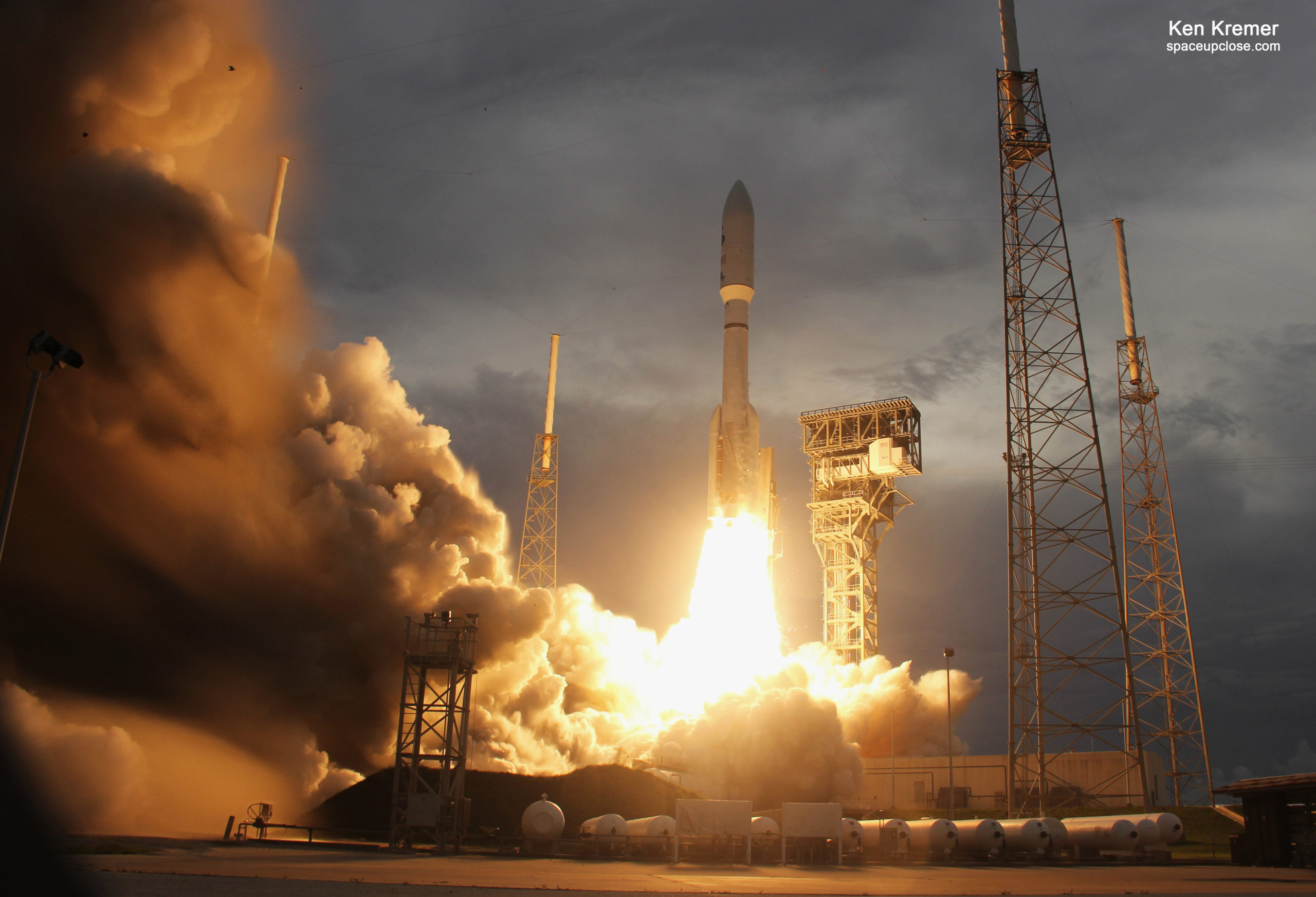
For SpaceUpClose.com & RocketSTEM
CAPE CANAVERAL SPACE FORCE STATION, FL – Following a scrub for multiple significant lightning strikes and stormy weather too close to the launch pad on Thursday June 30, and another over hour-long weather delay Friday, July 1, the venerable ULA Atlas V rocket launched magnificently at last carrying the new $1.1 Billion United States Space Force USSF-12 experimental missile warning and detection satellite mission to geosynchronous orbit.
USSF-12 delivered a duo of satellites to orbit comprising the Wide Field of View (WFOV) Geosynchronous Earth Orbit (GEO) Testbed and USSF-12 Ring satellites
The WFOV test bed satellite is outfitted with an advanced new infrared sensor payload serving as a pathfinder for further future upgrades critical for U.S. national security needs.
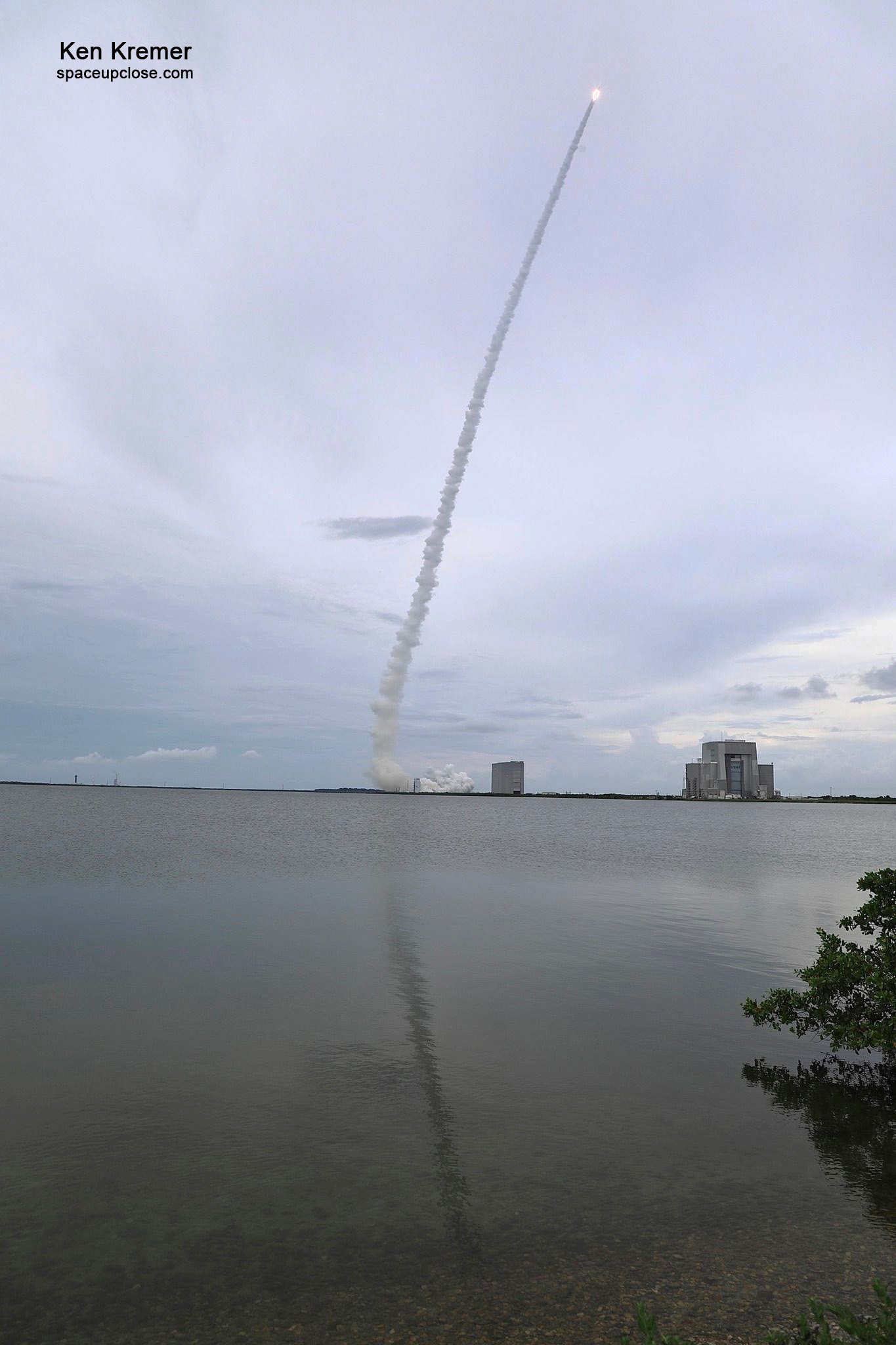 Streak to orbit: United Launch Alliance (ULA) Atlas V rocket lifts off on 2.3 million pounds of thrust on the USSF-12 testbed mission for early missile detection for the U.S. Space Force from seaside Space Launch Complex-41 (SLC-41) from Cape Canaveral Space Force Station in Florida, at 7:15 p.m. ET on July 1, 2022. Credit: Ken Kremer/spaceupclose.com
Streak to orbit: United Launch Alliance (ULA) Atlas V rocket lifts off on 2.3 million pounds of thrust on the USSF-12 testbed mission for early missile detection for the U.S. Space Force from seaside Space Launch Complex-41 (SLC-41) from Cape Canaveral Space Force Station in Florida, at 7:15 p.m. ET on July 1, 2022. Credit: Ken Kremer/spaceupclose.com
It can observe 1/3 of the Earth and will be based over the Asia Pacific region.
The beautiful liftoff of the ULA Atlas V on the USSF-12 testbed mission for the Space Force took place at 7:15 p.m. EDT (2315 GMT) from seaside Space Launch Complex-41 (SLC-41) at Cape Canaveral Space Force Station in Florida, on July 1 for the United States Space Force and Space Systems Command (SSC).
“Well done team,” tweeted Gen. Jay Raymond, Chief of Space Operations, U.S. Space Force.
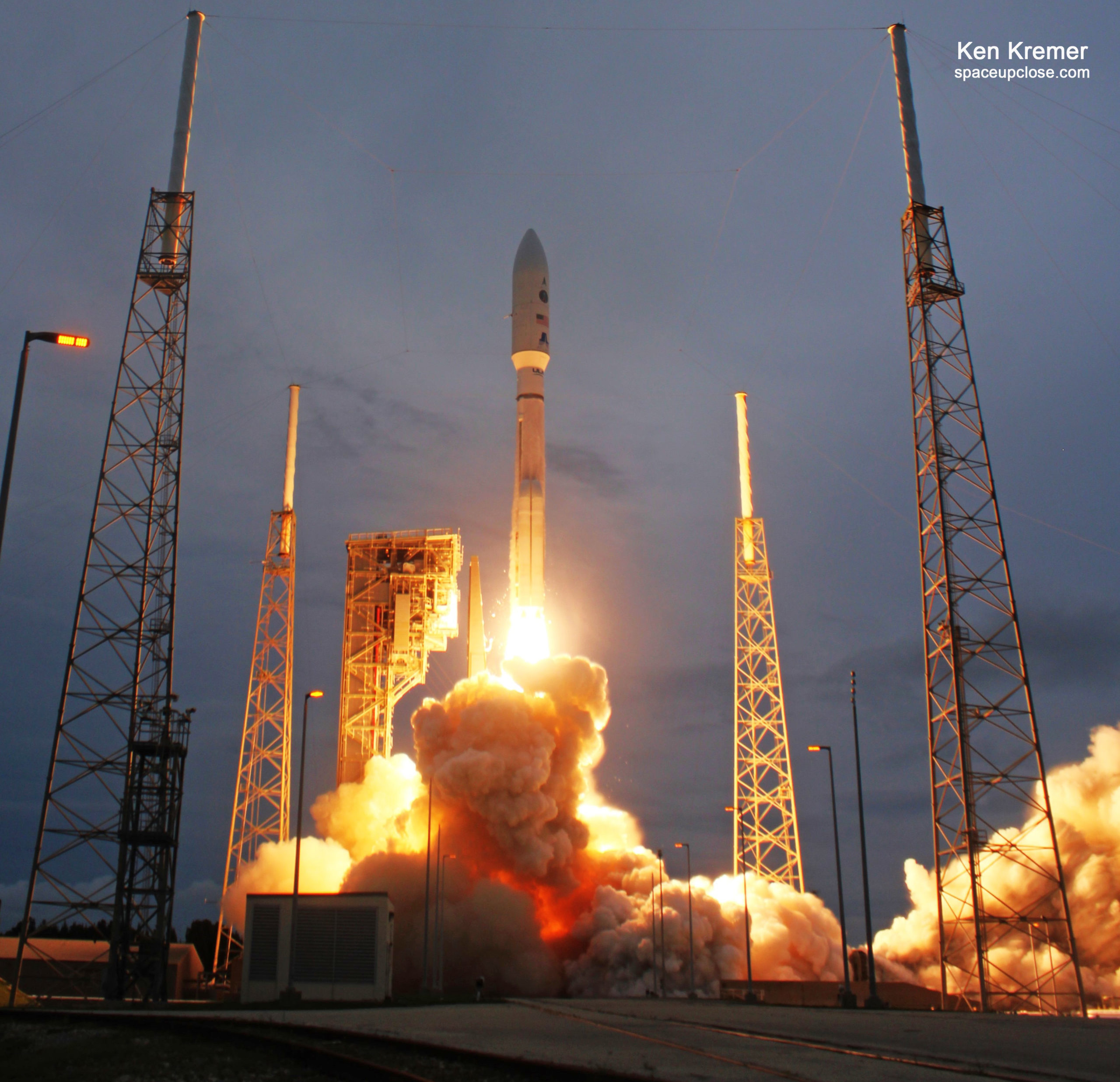
A lingering anvil cloud and excessive upper altitude winds delayed the USSF-12 launch more than halfway into the two-hour long window that closed at 8 p.m. EDT.
Weather had been forecast as extremely poor and forecast as only 20 to 40% GO.
Luckily the team had time to wait until the anvil cloud broke up over pad 41, finally enabling the stunning USSF-12 mission blastoff on 2.3 million pounds of first stage liftoff thrust spewing from the ULA Atlas V in the 541-configuration boasting four solid rocket boosters (SRBs).
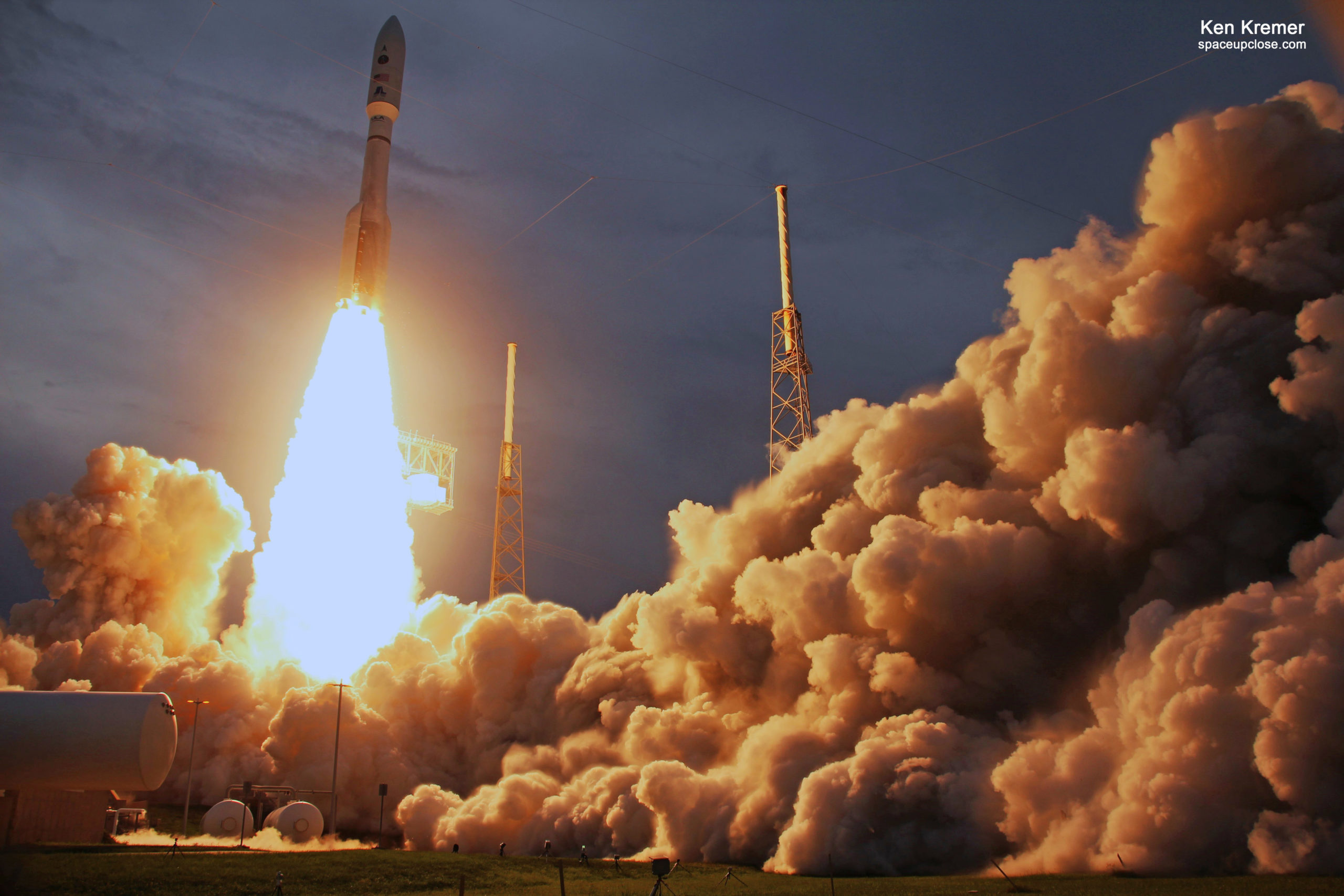
The USSF-12 satellite was delivered to geosynchronous orbit via a very complex and high energy series of thruster maneuvers during a more than six-hour long delivery, said ULA CEO Tory Bruno
“Double bullseyes on a set of very complex, high energy, orbital insertions. #AtlasV #USSF12. For your viewing pleasure…” tweeted ULA CEO Tory Bruno.
Double bullseyes on a set of very complex, high energy, orbital insertions. #AtlasV #USSF12. For your viewing pleasure… pic.twitter.com/0qXy6R7jFZ
— Tory Bruno (@torybruno) July 7, 2022
“USSF-12’s successful launch is a remarkable achievement for the entire team,” said Col. Brian Denaro, SSC program executive officer for Space Sensing, in a statement.
“This mission was a successful joint endeavor between SSC, NASA, and industry partners to advance Overhead Persistent Infrared (OPIR) technologies and concept of operations (CONOPS) through on-orbit demonstration of new materials and techniques. It’s the perfect example of how SSC is collaboratively leaning forward to bring exciting new space capabilities to the USSF and our mission partners.”
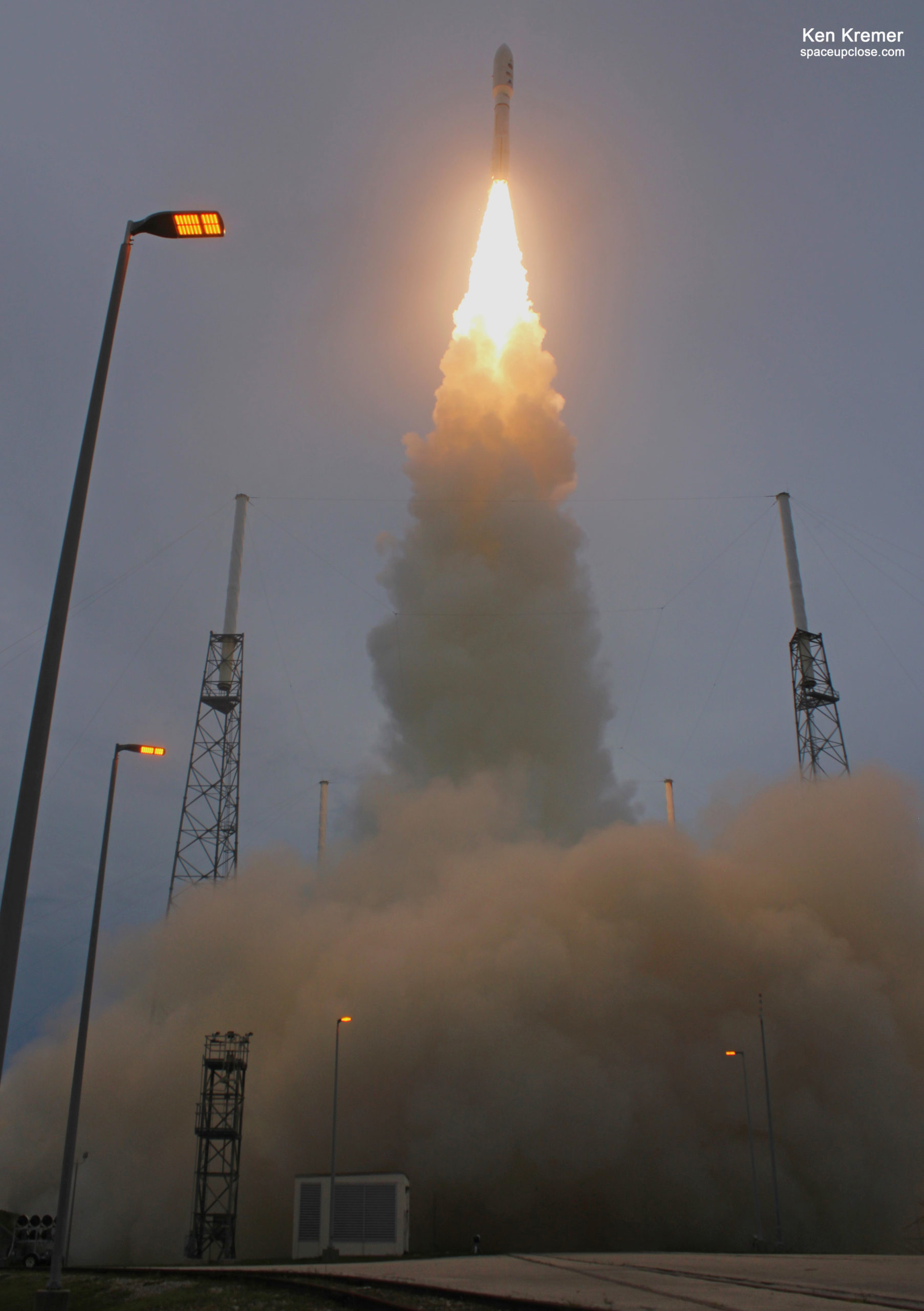
The WFOV GEO Testbed, “was designed to push the art of the possible across several technologies,” says the Space Force:
• The first in its class of sensor sensitivity across total field of view (Can track dim targets over large areas, improving worldwide coverage, in support of missile-warning architecture)
• Pathfinding Space Force process for new sensor operationalization and Integrated Tactical Warning/Attack Assessment (ITW/AA) certification
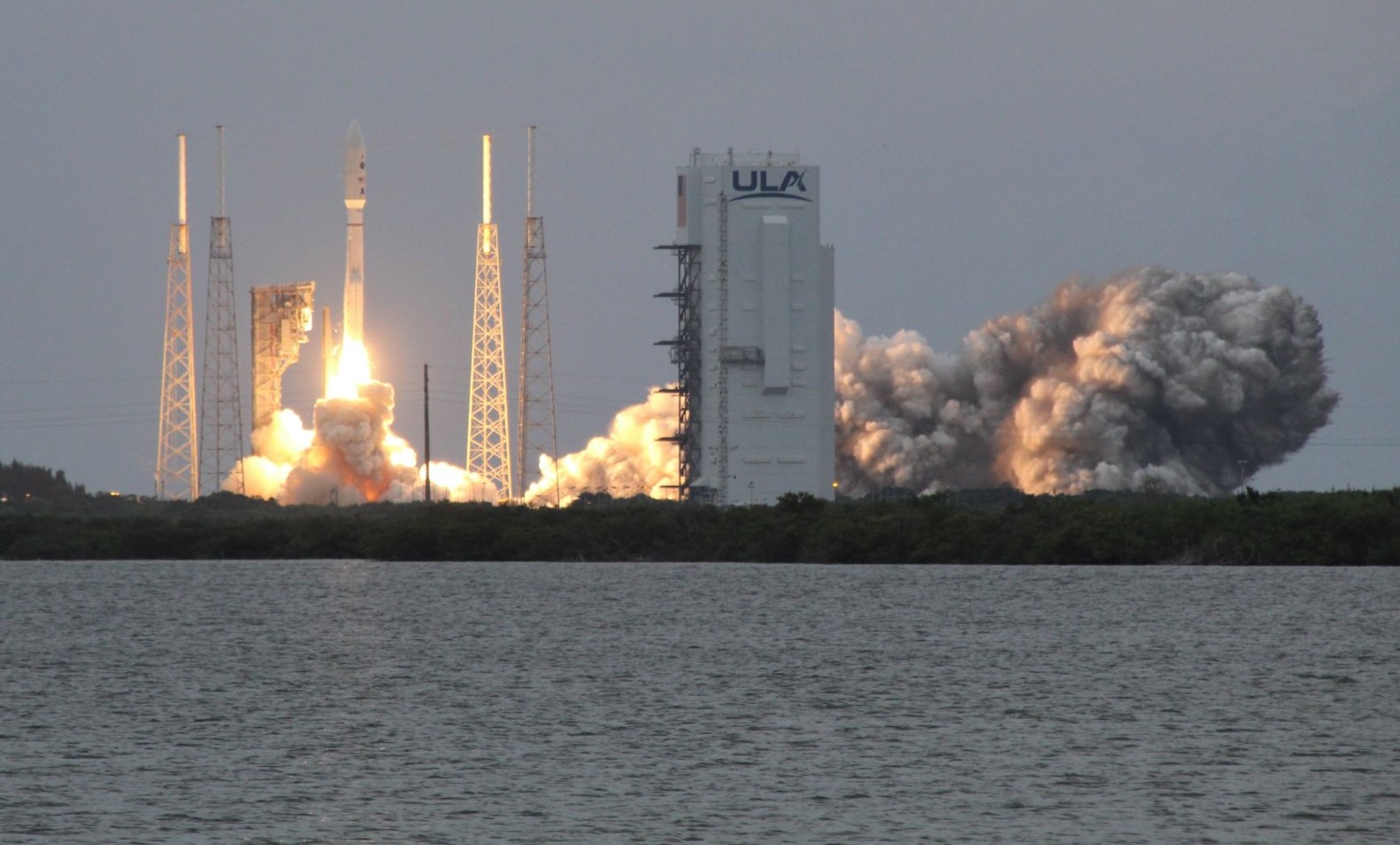
The Atlas V launch counted as the 2nd in 48 hours from the space coast following the June 29 launch of a SpaceX Falcon 9 on the SES-22 telecommunications satellite from neighboring pad 40.
“The USSF-12 GEO WFOV Testbed demonstration will mature emerging, large-format, focal-plane sensor technology, and algorithm development, with the ability to continuously monitor up to one-third of the Earth’s surface and validate multi-mission capabilities for the future Overhead Persistent Infrared (OPIR) architecture. The co-manifested USSF-12 Ring, based on the Northrop Grumman ESPAStar product line, known as Long Duration Propulsion ESPA (LDPE)-1, provides modular, flexible features that, when combined with available launch opportunities, create a “freight train to space” for experiments and prototypes in geosynchronous Earth orbit (GEO), “ says the Space Force.
The WFOV spacecraft was built by Millennium Space Systems, a Boeing Company, on the AQUILA M8 bus and features the Wide Area Six-degree Payload (WASP) infrared staring sensor built by L3Harris Technologies.
It measures over 6 feet (2 meters) tall and weighs more than 365 pounds (165 kilograms and has a 3 year design lifetime.
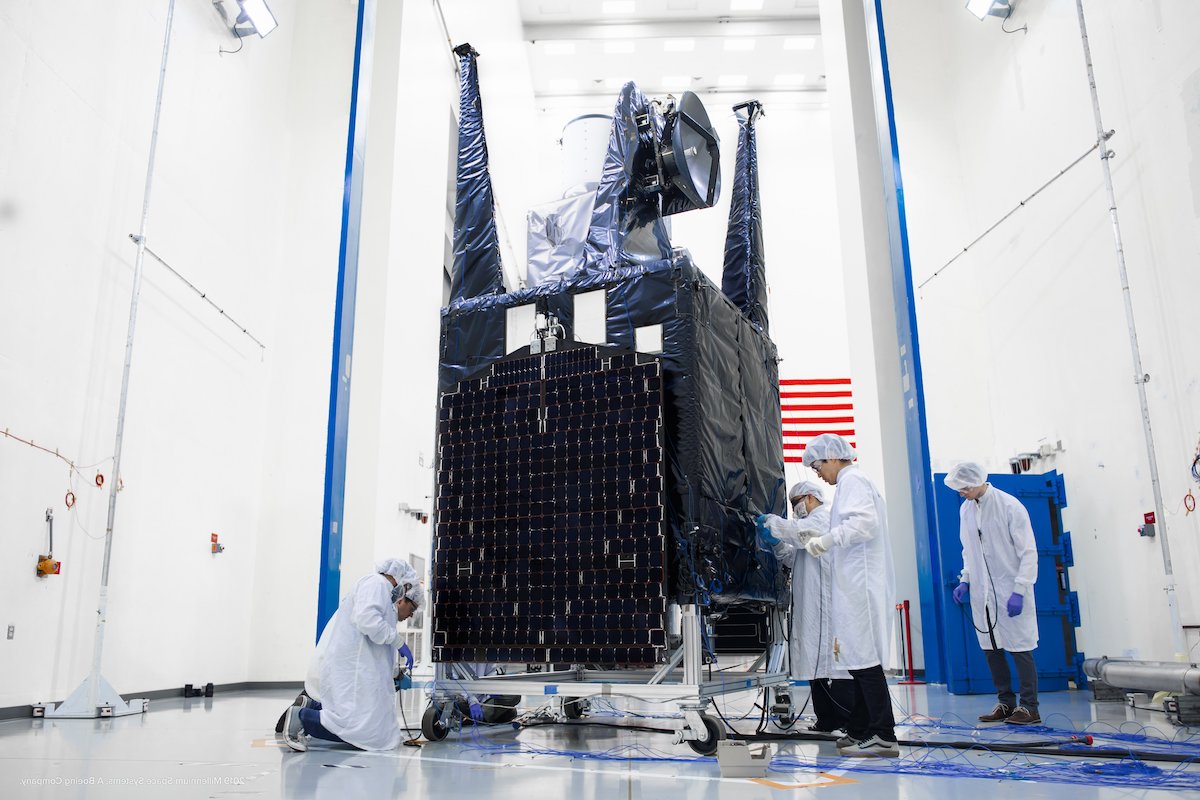
The mission is sponsored by the Space Systems Command (SSC) and managed by NASA’s Ames Research Center.
“Our GEO WFOV Testbed can simultaneously perform strategic missions, such as missile warning and battlespace awareness, as well as tactical missions directly supporting the warfighter, by continuously monitoring up to one-third of the Earth’s surface with just a single sensor,” said Col. Heather Bogstie, senior materiel leader for Resilient Missile Warning, Tracking, and Defense in SSC’s Acquisition Delta.
“WFOV is also pathfinding the process to operationalize OPIR data and obtain Integrated Tactical Warning/Attack Assessment (ITW/AA) certification for upcoming Resilient MW/MT/MD missions.”
Here is a rocketcam video of the Atlas V launch from Tory Bruno
Atlas V USSF-12 Rocket Cam https://t.co/74i32vR16v via @YouTube
— Tory Bruno (@torybruno) July 7, 2022
“Well done team,” tweeted Chief of Space Operations, US Space Force Gen. Jay Raymond
Well done team! #SemperSupra https://t.co/tboRj5nh0T
— General Chance Saltzman (@SpaceForceCSO) July 2, 2022
The USSF-12 mission marked the 151st launch overall for ULA – continuing a string of 100% mission success
ULA is a 50-50 joint venture between aerospace giants Boeing and Lockheed Martin.
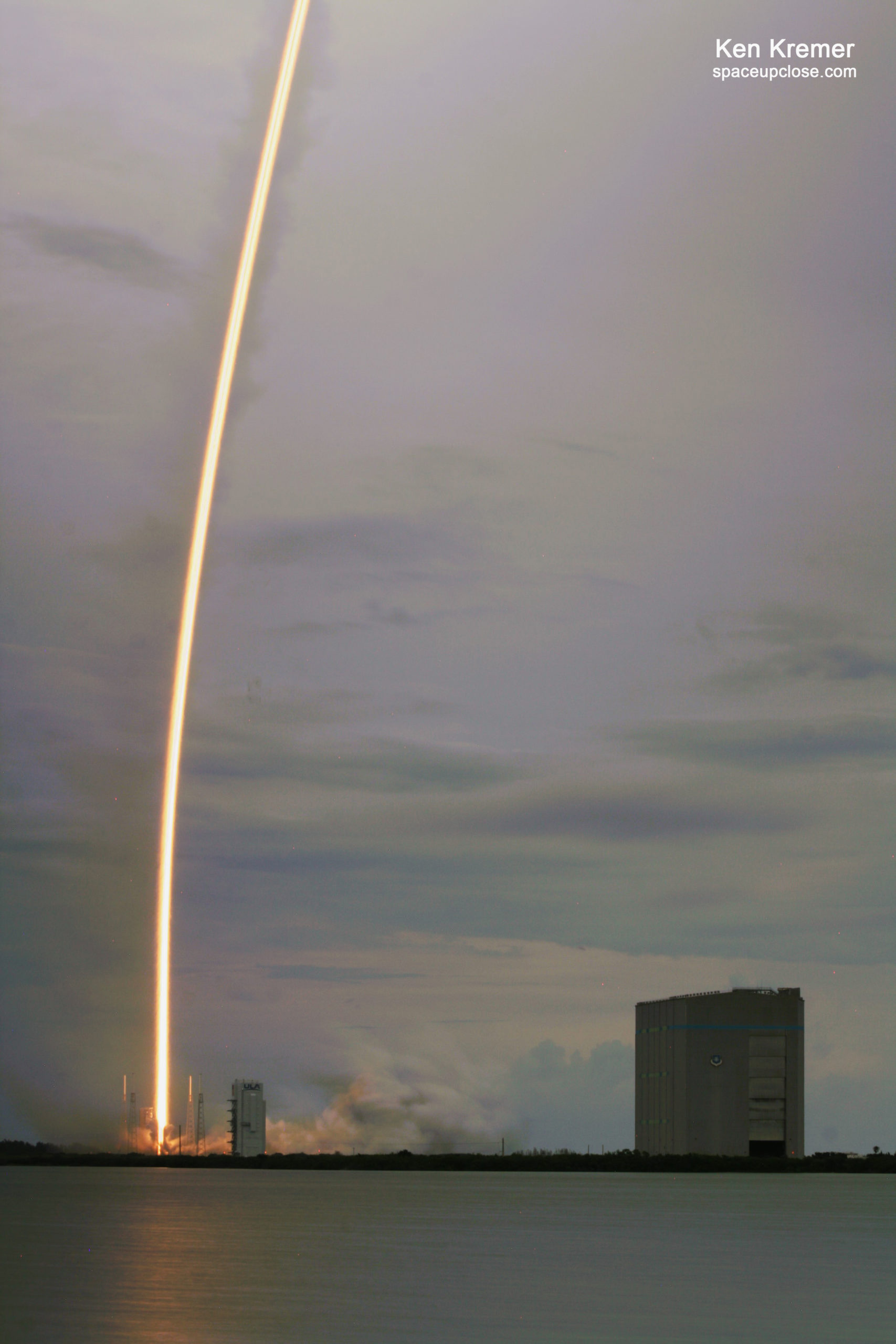
This was the fourth ULA mission of 2022 and the 94th launch of the Atlas V rocket in all its configurations – this one the 541 being the ‘Dominator.’
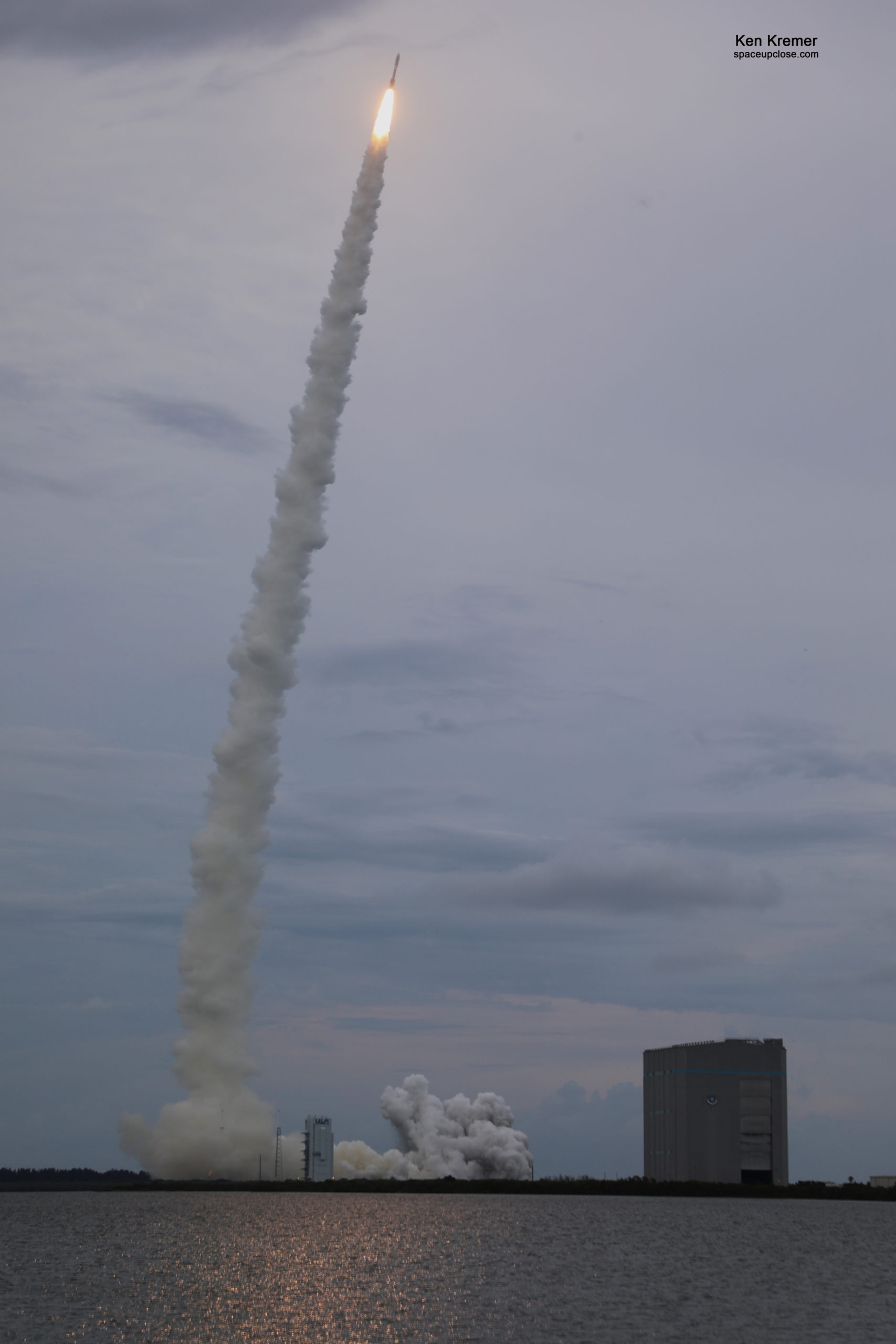
“This mission once again demonstrated ULA’s unmatched capability of precisely delivering the country’s most critical assets to a highly complex orbit,” said Gary Wentz, ULA vice president of Government and Commercial Programs, in a statement.
“Our strong partnership with the USSF team is essential to maintain our nation’s security advantages and achieve robust mission assurance. Thank you to the ULA team and our mission partners for the indelible commitment to mission success.”
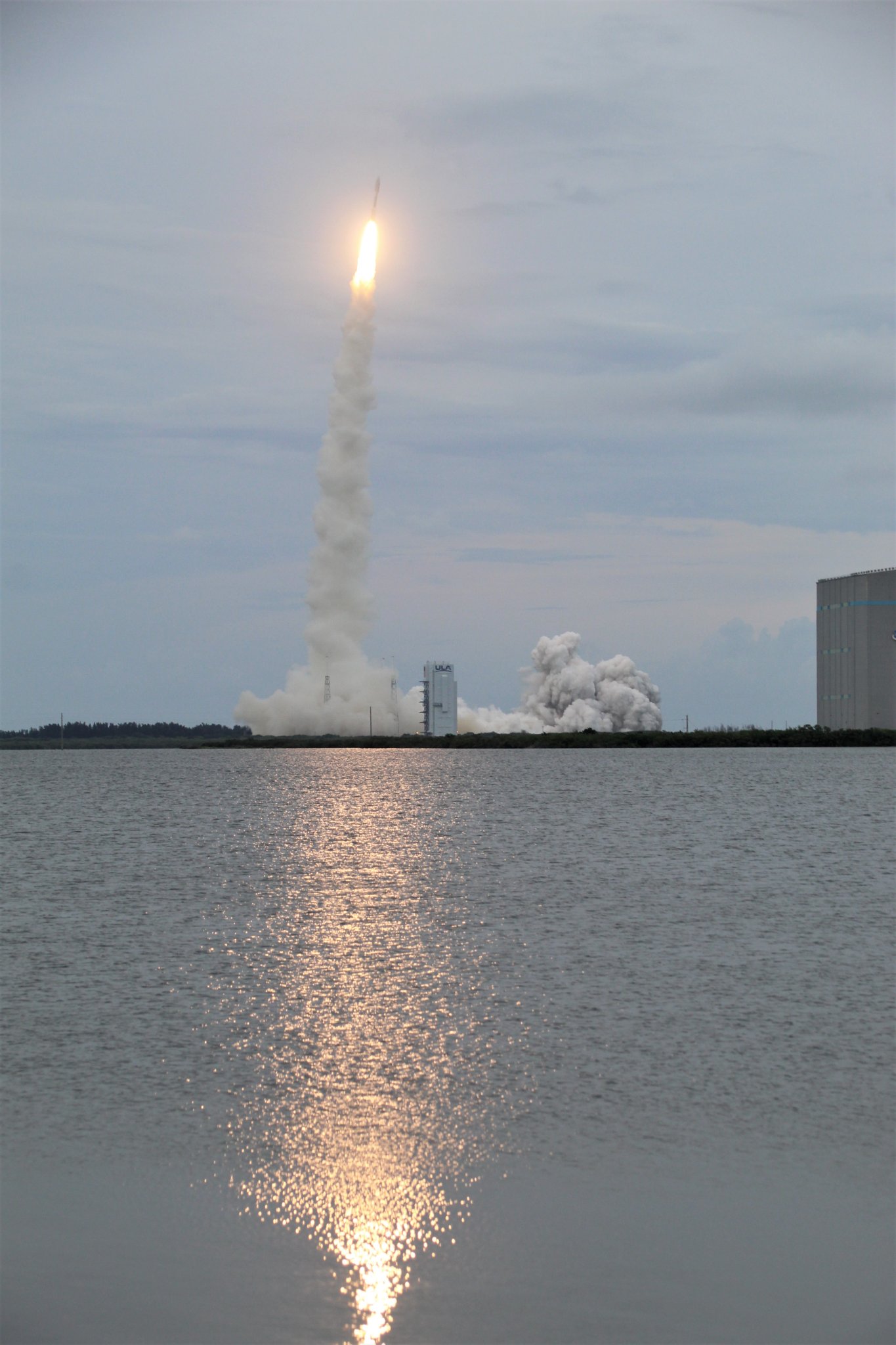
The ULA Atlas V rocket launched in the 541-configuration rocket that includes a 5-meter short payload fairing.
The Atlas booster for this mission was powered by the Russian made RD AMROSS RD-180 main engine.
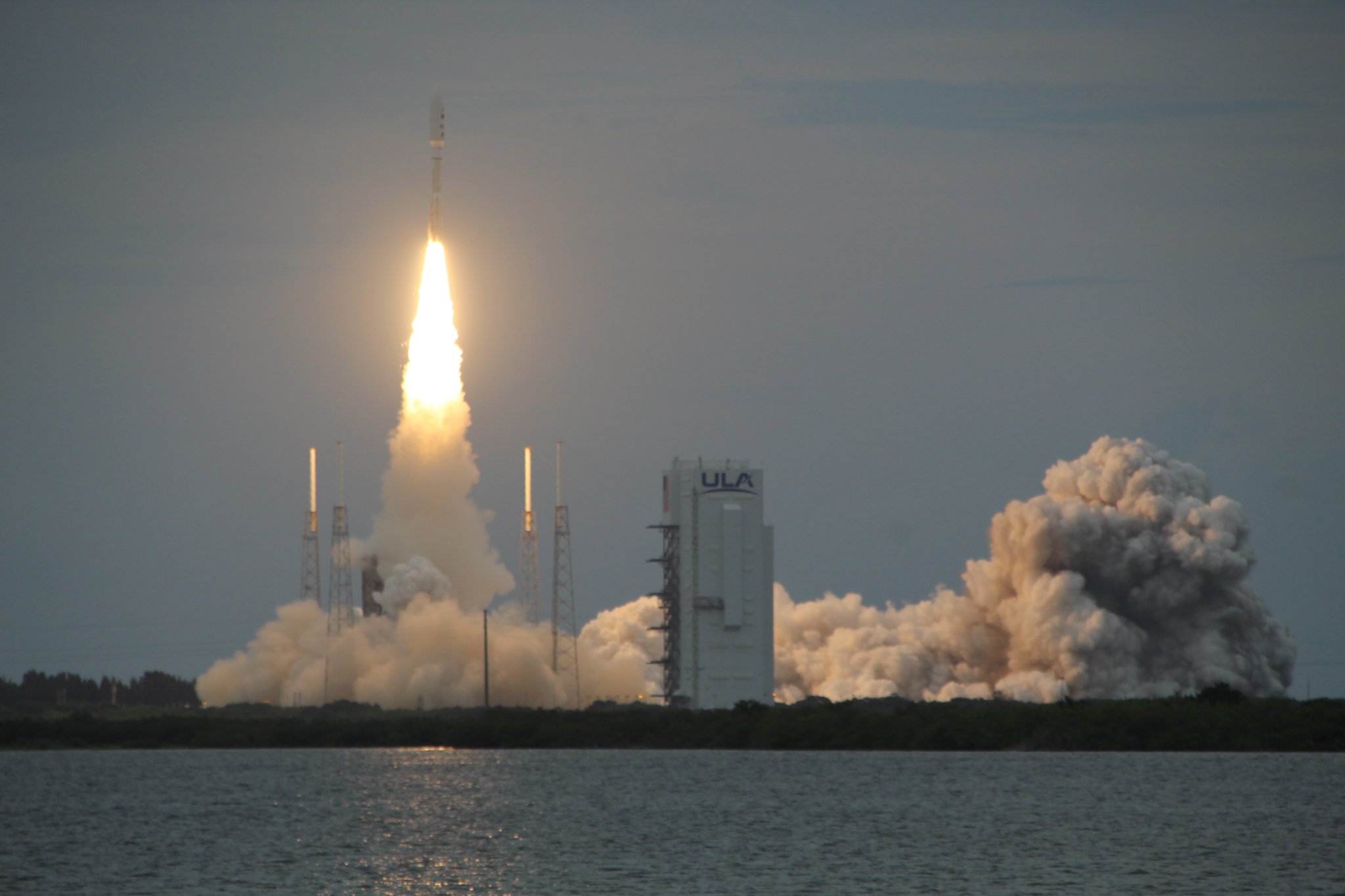
Aerojet Rocketdyne provided the RL10C-1 engine for the Centaur upper stage and Northrop Grumman provided the four Graphite Epoxy Motor (GEM) 63 solid rocket boosters powering the first stage for a total of 2.3 million pounds of liftoff thrust.
ULA’s next launch is the sixth Space Based Infrared System Geosynchronous Earth Orbit (SBIRS GEO 6) mission for the U.S. Space Force’s Space Systems Command, planned for August 2022, from Cape Canaveral Space Force Station, Florida.
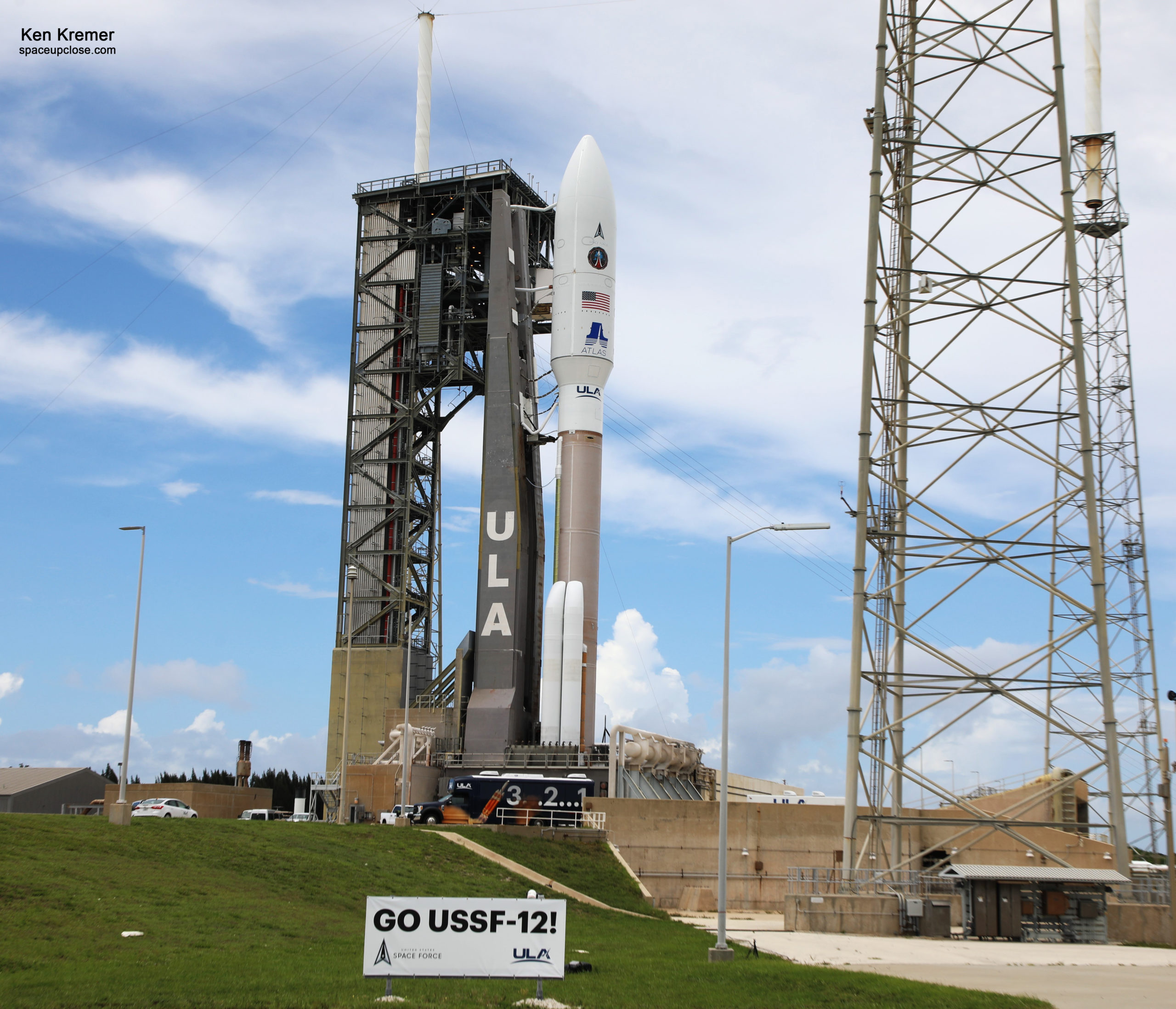
Watch Ken’s commentary about Space Force missions, NASA SLS WDR demo test, SpaceX missions including NASA Crew-3 and Crew 4, AX-1, Nilesat 301, Transporter-5, Starlink, Boeing Starliner, and NASA TROPICS 1.
Jun 21/22: WFTV ABC Orlando News featured my commentary about NASA’s 4th SLS WDR fueling attempt Jun 20, the results and whats ahead after NASA conducts detailed analysis of the 1st tanking test to completely load both stages with LOX & LH2 and run the terminal count to T-29 sec despite a hydrogen leak – achieving many but not all objectives
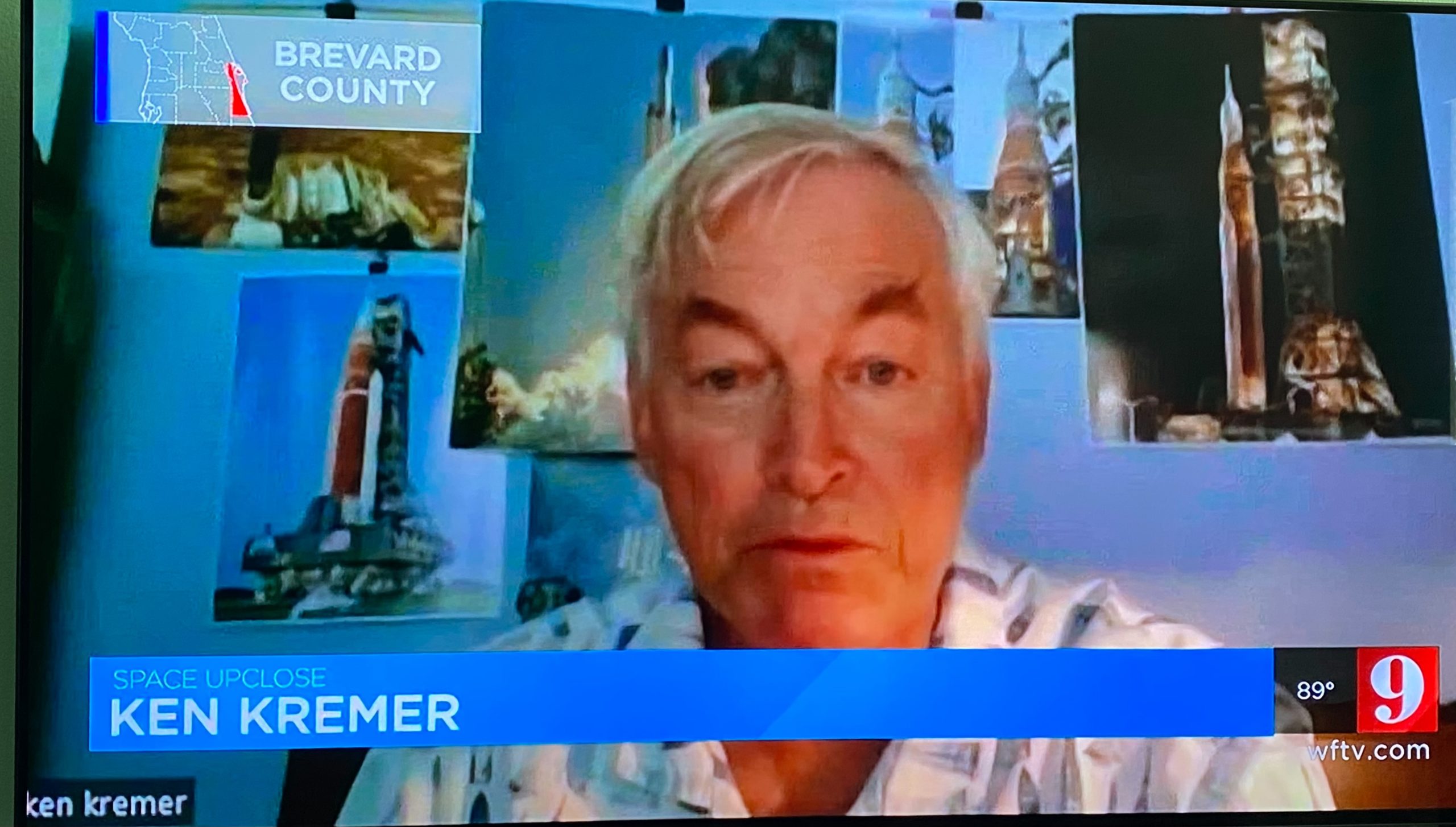
Jun 17: Fox 35 Orlando featured my commentary about the selection of 2 NASA astronauts to fly on the 1st crewed mission of Boeing Starliner capsule on CFT test flight late 2022 – and what it means for human spaceflight to have a 2nd US commercial crew provider following the successful Boeing Starliner OFT-2 mission for NASA
Jun 9/10: WFTV ABC Orlando features my commentary about the upcoming NASA TROPICS 1 & 2 cubesat science launch on an Astra Rocket 3.3 from pad 46 for NASA which will study the formation and evolution of Tropical Cyclones and Hurricanes. Two more launches will follow for 6 TROPICS cubesats altogether over next few months
Jun 8: WFTV ABC Orlando features my commentary about the SpaceX Falcon 9 launch of NileSat301 telecom sat for Egypt
June 6/7: WFTV ABC Orlando features my commentary about completing 2nd rollout to pad 39B for 2nd round WDR tanking test, what’s involved in and why its critical to the future of Project Artemis:
Watch Ken’s continuing reports about SpaceX missions Artemis, SLS, Orion and NASA missions, SpaceX Crew and Cargo Dragons, SpaceX Axiom-1, JWST, IXPE, DART, Lucy Asteroid mission, GOES, SpaceX Starlink, Commercial Crew and Starliner and Crew Dragon, Blue Origin and Space Tourism, and onsite for live reporting of upcoming and recent SpaceX and ULA launches including Crew 1 & 2 & 3 & 4, ISS, Solar Orbiter, Mars 2020 Perseverance and Curiosity rovers, NRO spysats and national security missions and more at the Kennedy Space Center and Cape Canaveral Space Force Station.
Stay tuned here for Ken’s continuing Earth and Planetary science and human spaceflight news: www.kenkremer.com –www.spaceupclose.com – twitter @ken_kremer – email: ken at kenkremer.com
Dr. Kremer is a research scientist and journalist based in the KSC area, active in outreach and interviewed regularly on TV and radio about space topics.
………….
Ken’s photos are for sale and he is available for lectures and outreach events
Please consider supporting Ken’s work by purchasing his photos and/or donating at Patreon
https://www.patreon.com/kenkremer
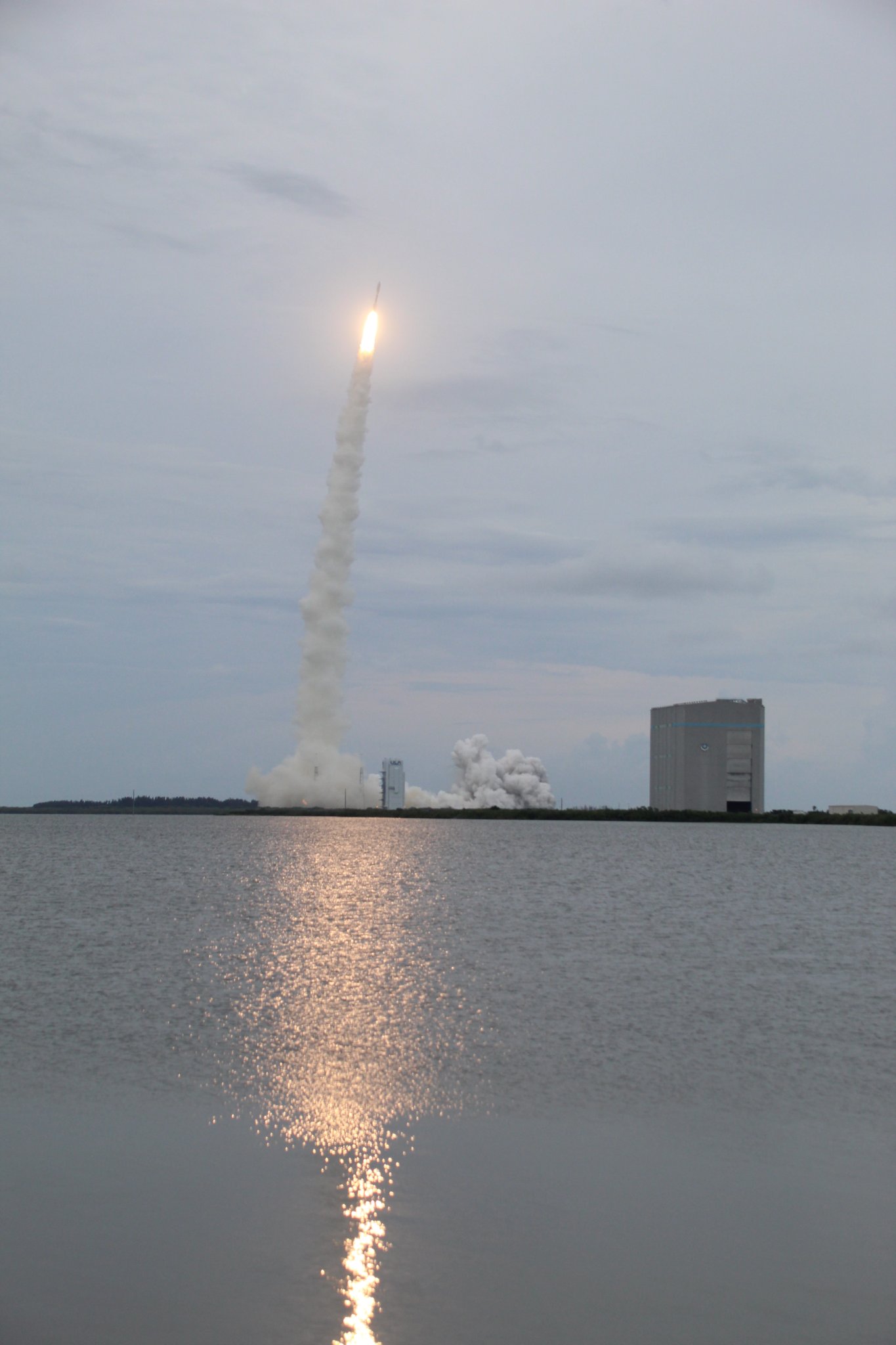
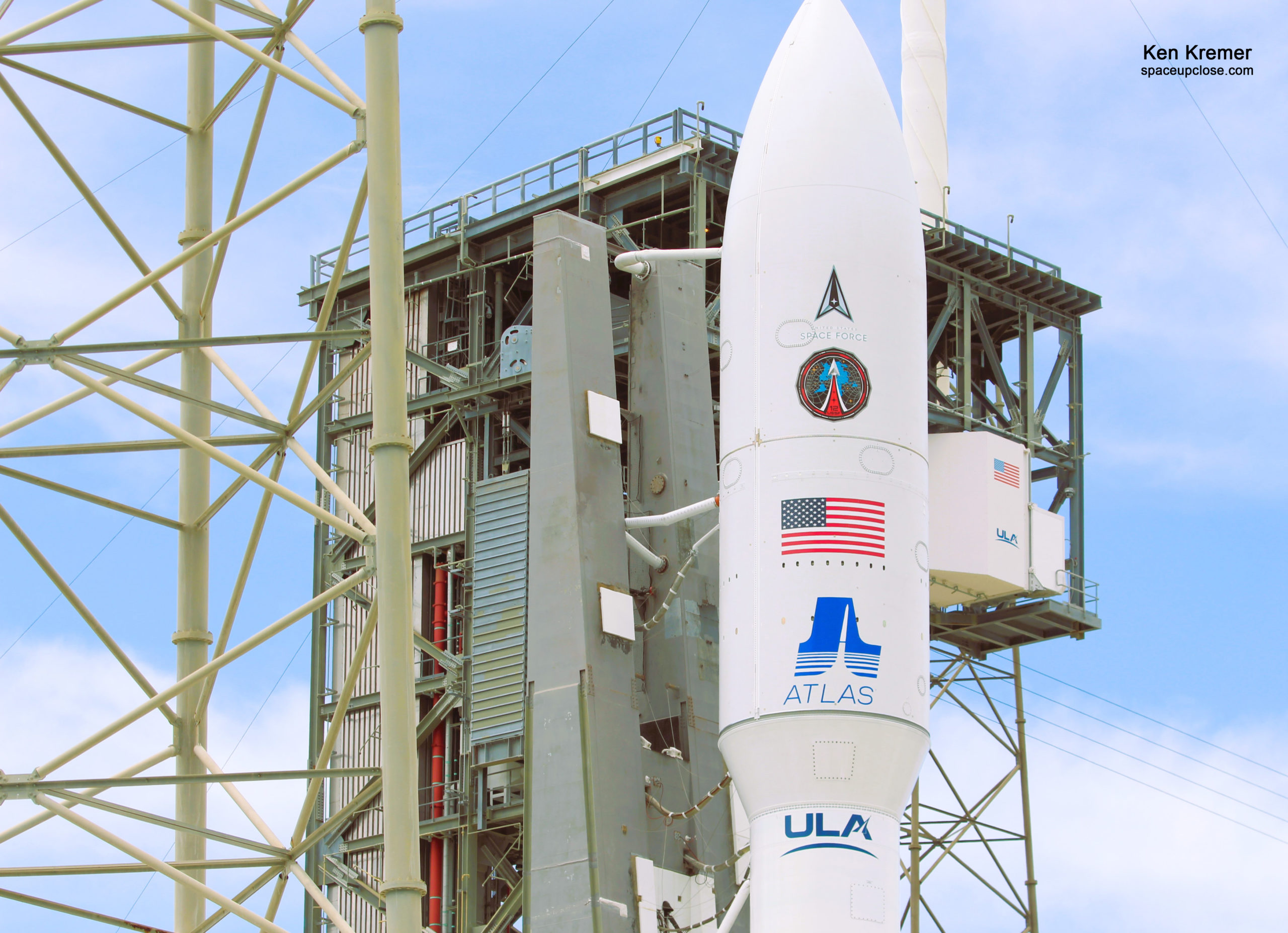
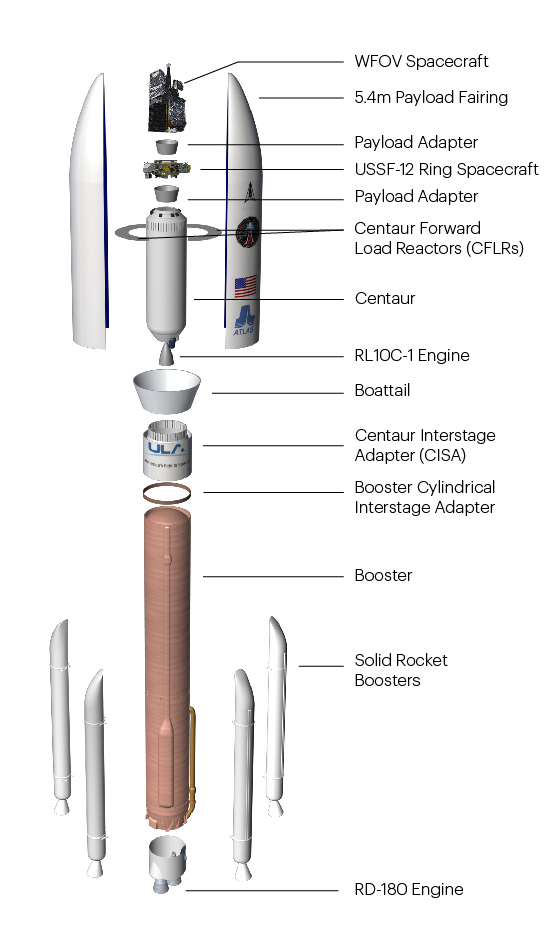
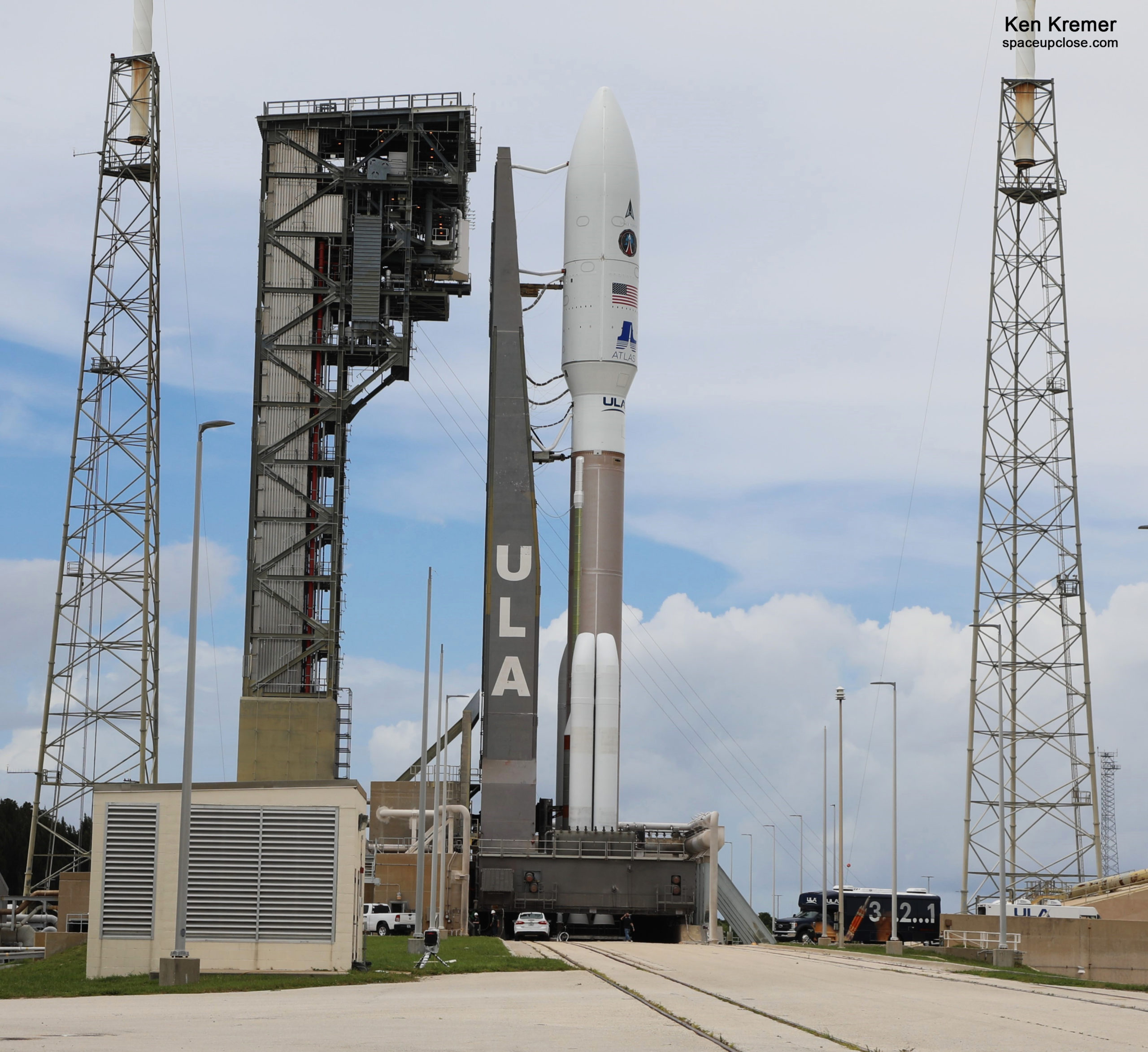
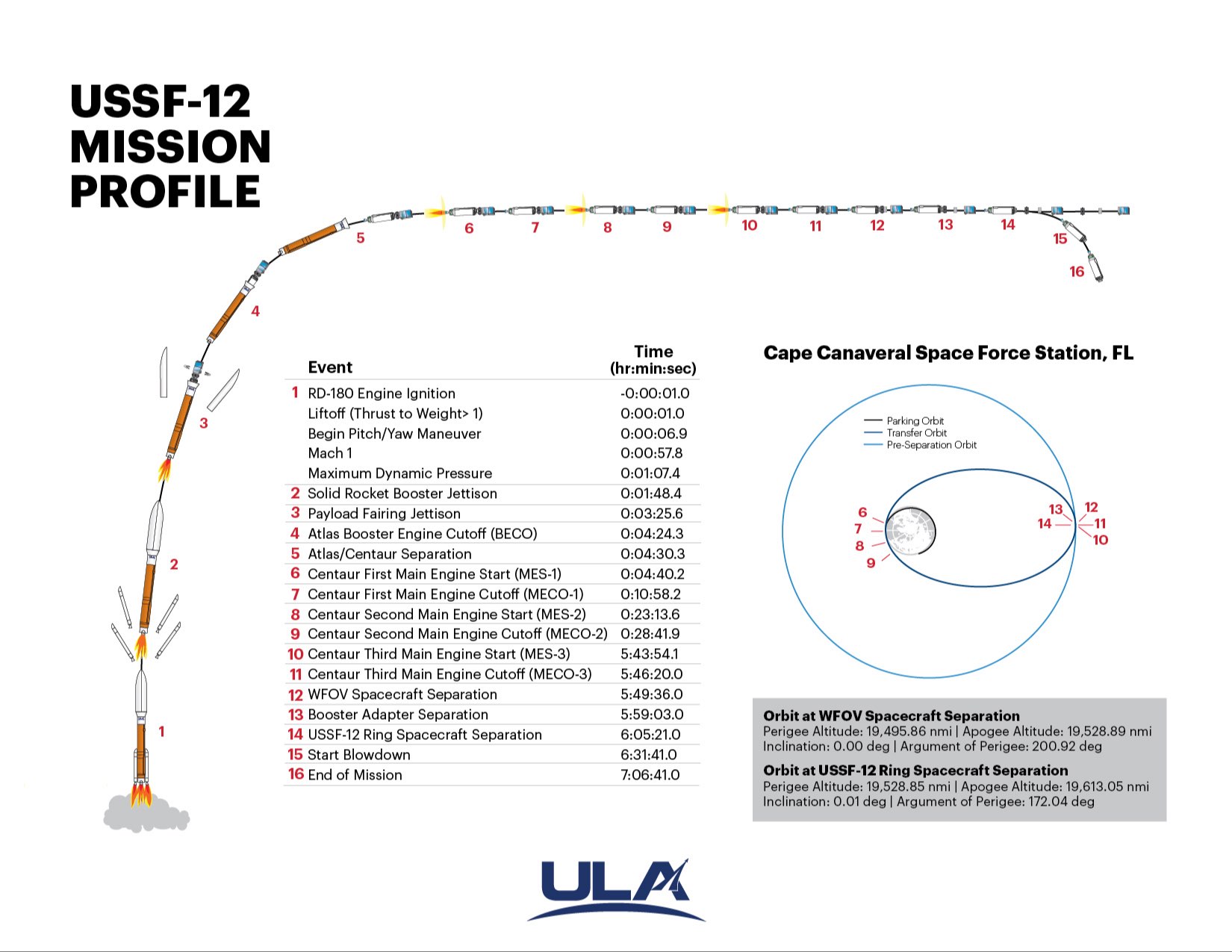
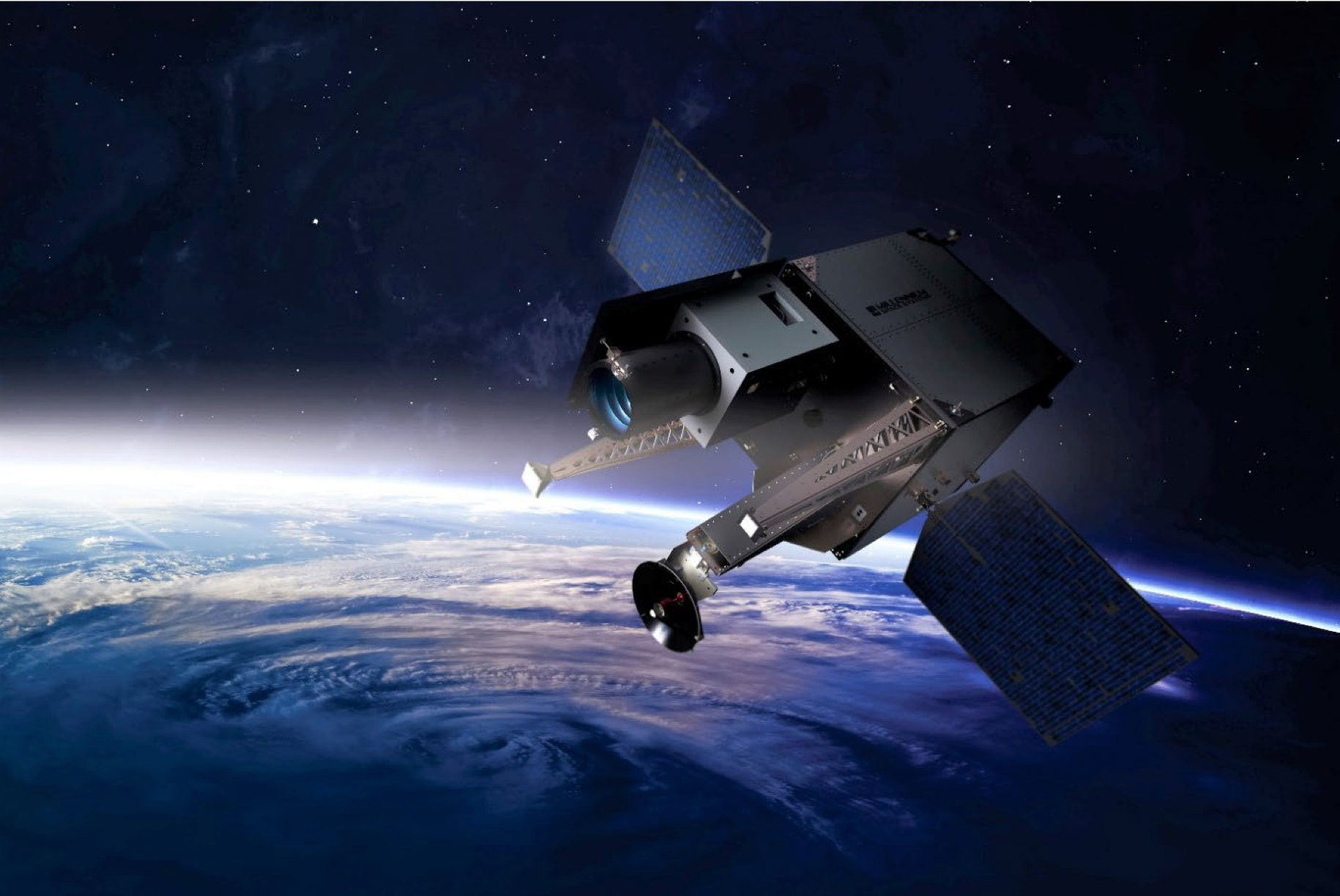
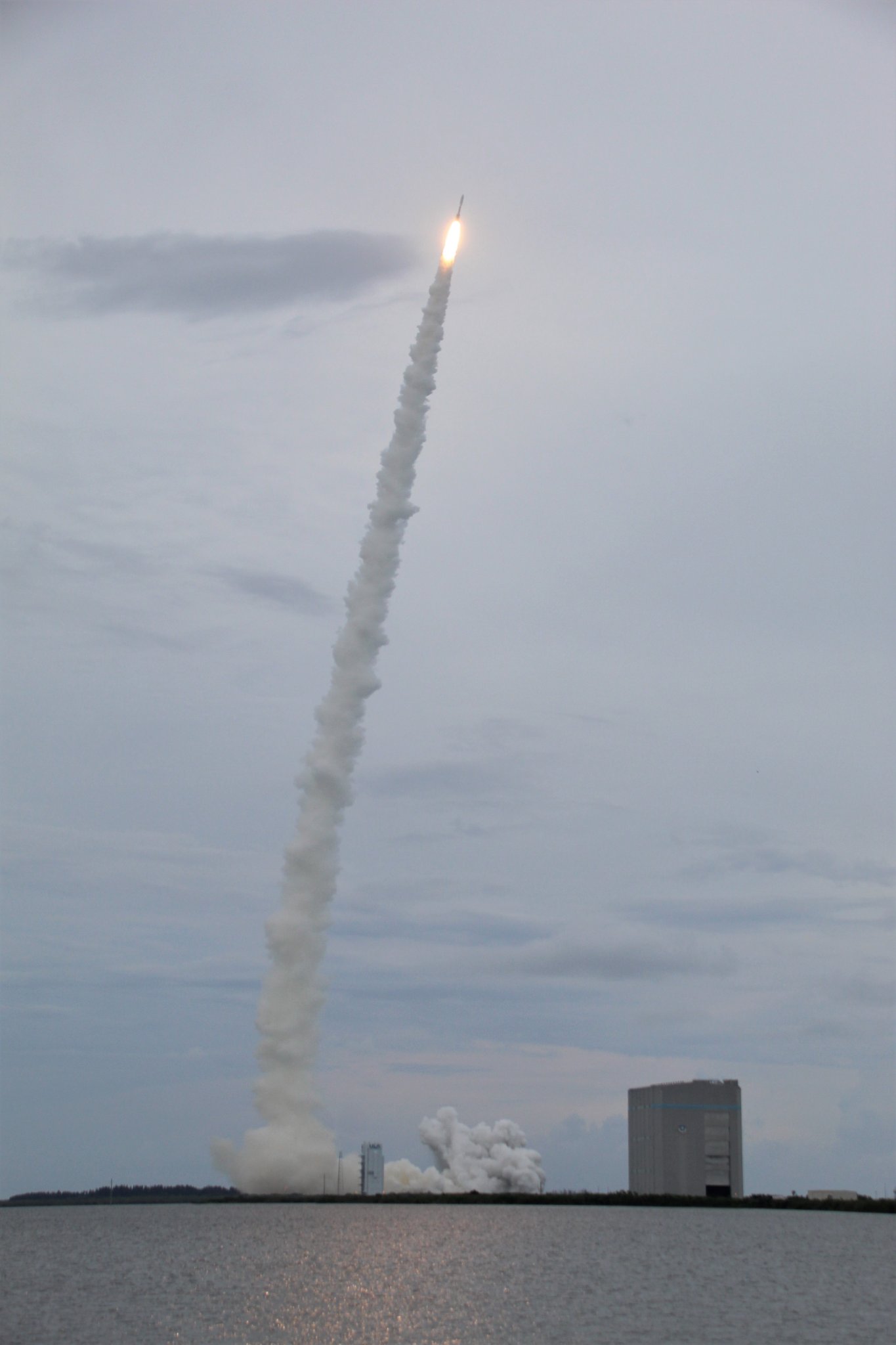
x



